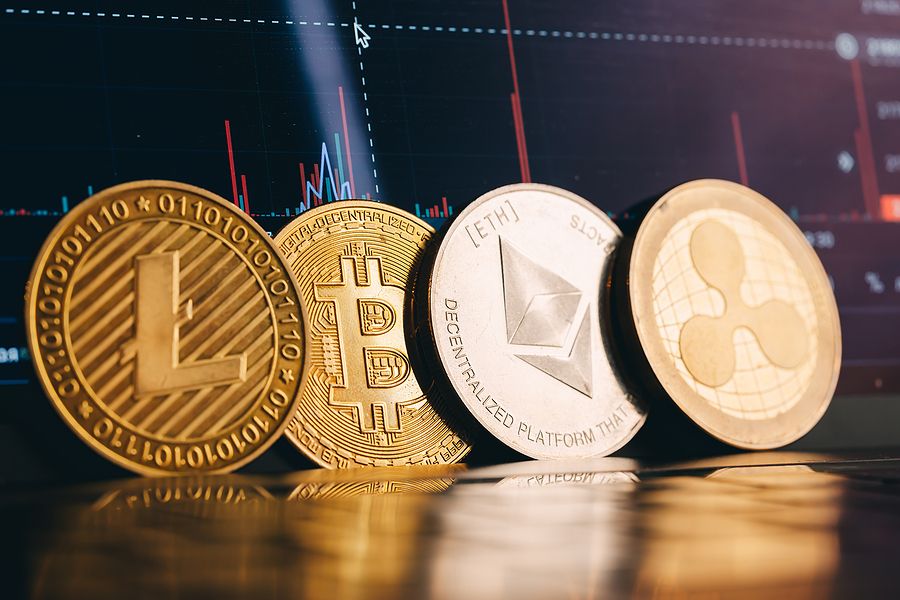Why do all cryptocurrencies rise and fall together
Founded in 1993, The Motley Fool is a financial services company dedicated to making the world smarter, happier, and richer. The Motley Fool reaches millions of people every month through our premium investing solutions, free guidance and market analysis on Fool https://taoxoan.info/.com, personal finance education, top-rated podcasts, and non-profit The Motley Fool Foundation.
Georgia Weston is one of the most prolific thinkers in the blockchain space. In the past years, she came up with many clever ideas that brought scalability, anonymity and more features to the open blockchains. She has a keen interest in topics like Blockchain, NFTs, Defis, etc., and is currently working with 101 Blockchains as a content writer and customer relationship specialist.
Maybe it will be weird for you to hear that some of the most popular crypto money are limited, and there can’t be more than that. For example, there are 21 million Bitcoins circulating over the market, and that’s the upper limit, and the developers won’t ever let one more coin to be available. The same goes for the Bitcoin cash too. On the other hand, Ethereum and Litecoin don’t have a limit, and the supply is getting bigger every day, making them more available for the people. But, at the same time, it means they can’t really reach very high rates. This is another one important difference between these currencies – if the supply is determined, they are getting more worthy every day. But, if there are uncountable coins, their worth will never be stable.
Tokens are not currency at all, though they can represent units of value. Instead, tokens are a form of programmable asset specifically used to create and execute smart contracts. When a token represents a unit of value, it can stand in to represent physical or digital assets, including cryptocurrency, though it is not a unit of currency in its own right. Basically, if you own a token representing an asset, you own a blockchain-verified smart contract connected to the asset in question.

All cryptocurrencies
TThe data at CoinMarketCap updates every few seconds, which means that it is possible to check in on the value of your investments and assets at any time and from anywhere in the world. We look forward to seeing you regularly!
Price volatility has long been one of the features of the cryptocurrency market. When asset prices move quickly in either direction and the market itself is relatively thin, it can sometimes be difficult to conduct transactions as might be needed. To overcome this problem, a new type of cryptocurrency tied in value to existing currencies — ranging from the U.S. dollar, other fiats or even other cryptocurrencies — arose. These new cryptocurrency are known as stablecoins, and they can be used for a multitude of purposes due to their stability.
Almost. We have a process that we use to verify assets. Once verified, we create a coin description page like this. The world of crypto now contains many coins and tokens that we feel unable to verify. In those situations, our Dexscan product lists them automatically by taking on-chain data for newly created smart contracts. We do not cover every chain, but at the time of writing we track the top 70 crypto chains, which means that we list more than 97% of all tokens.

TThe data at CoinMarketCap updates every few seconds, which means that it is possible to check in on the value of your investments and assets at any time and from anywhere in the world. We look forward to seeing you regularly!
Price volatility has long been one of the features of the cryptocurrency market. When asset prices move quickly in either direction and the market itself is relatively thin, it can sometimes be difficult to conduct transactions as might be needed. To overcome this problem, a new type of cryptocurrency tied in value to existing currencies — ranging from the U.S. dollar, other fiats or even other cryptocurrencies — arose. These new cryptocurrency are known as stablecoins, and they can be used for a multitude of purposes due to their stability.
Why do all cryptocurrencies rise and fall together
The appeal of non-government currencies, such as a crypto currency, is that they are separated from the control of and the reliance upon the backing of a centralized authority. However, this disintermediation also removes the theoretical stability provided to a currency by a governmental authority and the backing of that currency by the actual economy of a nation state. Without this backing, cryptocurrencies do not, and should not be expected to, trade in the traditionally more stable manner of fiat currencies.
Inflation and interest rates directly impact cryptocurrency prices. When inflation rises, traditional currencies lose value, prompting investors to seek alternative assets like Bitcoin. However, the relationship isn’t always straightforward. For example, Bitcoin’s price reacts differently depending on inflation levels:
Forks can also lead to uncertainty. When a blockchain splits into two versions, investors may hesitate, unsure of which version will gain traction. Bitcoin Cash, created from a bitcoin fork in 2017, saw initial volatility before stabilizing. Upcoming upgrades, like the Chang Hard Fork expected in 2024, are predicted to spark bullish trends based on historical patterns. These events demonstrate how technological changes can influence cryptocurrency prices both positively and negatively.
A strong community often determines the success of a cryptocurrency. Active user engagement, transaction volume, and network growth are key indicators of a project’s potential. Cryptocurrencies with vibrant communities tend to attract more investors, boosting their price and market position.
